From NYCRF” On behalf of the NYCRF here is a letter written for all of you that you can print out, sign, add your name address and phone number and then send to the NYS DEC in order to do your part in protecting Striped Bass. We need to defeat this issue long before it becomes a reality.”
Joe Martens 19 Feb 201 1
Acting Commissioner
New York State DEC
625 Broadway
Albany, NY 12233-1011
Dear Mr. Martens,
I am writing this letter to express my opposition to recent proposals that would allow a directed trawl fishery for striped bass, and also to express our concern about a declining striped bass fishery.
It is important we face several realities about the east coast population of striped bass. First, the size of the population is declining and second, recent recruitment has been poor to bad overall. It seems to us that these two signals should give us pause, lest we put the population in jeopardy of another steep decline similar to that of the 1980s. In short, this should be a time when managers take a step back, increase size limits, and reduce bag limits across the board. A flexible management approach is, after all, a fundamental fisheries management strategy in both fresh and saltwater venues.
Furthermore, the harvesting of striped bass for money, regardless of the particulars: commercial, recreational commercial (ex. charter boats), guide services, etc; should not become an excuse to allow harvest increases or excesses in a misguided sense of protecting jobs. Many studies have repeatedly shown that the greatest value of striped bass to the economy isn’t found in direct and easily documented expenditures such as bookings alone or commercial landings; rather it is nurtured within the day-to-day activities of striped bass anglers. More than any other inshore species, anglers consider the pursuit of striped bass to be a special, even sacred sport: a sport that requires a large fish population in order to generate and maintain a high level of enthusiasm, and get the troops out fishing frequently. When anglers fish often, they spend money on tackle, line, lures, clothing, accessories, hotels, motels, gasoline and diesel, local eateries, books, videos, etc.
Also, the recently implemented saltwater license has had a subtle psychological effect on how anglers view their angling experiences. To be blunt, they expect more. They expect a change from the “old way,” where bureaucrats kow-tow to the demands of commercial fishermen and others who make a living from our fisheries resources. Sooner or later we all need to recognize the reality that if a species declines, fewer anglers hire guides, get on party boats, or rent charter boats regardless of how many fish they can theoretically kill. No one wants a day on the water where very little happens. Angling is a sport about fun, and secondarily about killing. Licensed anglers expect that managers will realize the importance of a robust and conserved population of striped bass. Furthermore, we must remember this reality: if the species anglers pursue aren’t nurtured and protected, there will be little reason to purchase a license or go fishing. At that point, not only will a rich tradition of pursuing striped bass in the coastal ocean suffer as it did in the 1980s, but all those who are part of an economy pursuant to angling for striped bass will suffer as well.
This is a time when we need conservation and protection of striped bass and not a liberalization of rules that allows for more killing. Anglers have become increasingly concernedrecent years about a reduced quality of striped bass fishing as well as the declining size of the population. These serious concerns emerge from an evaluation of their catches and their logs, and have stimulated a great deal of vibrant discussion not only among independent anglers and their organizations, but also in magazines, newspapers, and online: this is not a figment of our collective imaginations, it is real. We need to reverse the decline, not enhance it.
Yours Truly;
_________________
….
Tom Farrell
weakfishin@yahoo.com
631-475-1133 x123
Vice President-New York Coalition for Recreational Fishing
….
Tautog News
News Release
Coastal Conservation Association New York
PO Box 1118, West Babylon, NY 11704
www.ccany.org
FOR IMMEDIATE RELEASE February 22, 2011 CONTACT: Charles Witek, 1-800-201-FISH
CCA NY URGES ASMFC, NEW YORK STATE TO IMPROVE TAUTOG MANAGEMENT
SAYS CURRENT MANAGEMENT ENCOURAGES ILLEGAL COMMERCIAL HARVEST
West Babylon, NY—In comments made today at a public hearing convened by the Atlantic States Marine Fisheries Commission (ASMFC), Coastal Conservation Association New York (CCA NY) urged fisheries managers to take meaningful action to rein in rampant illegal commercial harvest of tautog (also known as “blackfish”) and to adopt harvest targets that will permit the population to rebound. In a separate action, it asked the New York State Department of Environmental Conservation (DEC) to prohibit the sale of live blackfish or, in the alternative, adopt regulations that will strictly limit the number of commercial tautog harvesters and the number of tautog such harvesters may land.
Tautog, a structure-dwelling bottom fish, were once abundant on reefs, wrecks and stretches of rocky bottom along New York’s coast, where they supported an important recreational fishery that was enjoyed by anglers fishing from shore and from private and for-hire vessels. At that time, the commercial tautog fishery was unimportant (in 1985, for example, 84,500 pounds were commercially landed, and sold for just 37 cents per pound). However, in the late 1980s, a market for live tautog emerged in the ethnic districts of major northeastern cities. Commercial harvest increased sharply, peaking at more than 285,000 pounds in 1989. In response, the tautog population began to decline sharply. ASMFC has since made half-hearted efforts to stem the decline and begin rebuilding the population, but has so far been unwilling to heed scientific advice and impose the necessary restrictions.
“Beginning in 1996, staff biologists have told ASMFC what it needs to do to recover the tautog population,” notes Brian O’Keefe, Government Relations Committee Chair for CCA NY. “However, ASMFC has flatly refused to do it. In 2002, they finally established a harvest target, but it was nearly twice as high as what the biologists said was needed. A new, lower target was adopted three years ago, but it was still 25% above the scientists recommended harvest level. Now, ASMFC is again considering a scientifically-supportable target. We can only hope that they finally find the courage to do the right thing.”
However, if ASMFC never set the harvest target low enough to recover the stock, they did mandate regulations tough enough to hamper the lucrative commercial live tautog fishery, and drive much of it underground. As a result, illegal harvest has become rampant, to the point where there are no longer effective legal controls. ASMFC has finally recognized the threat posed by the illegal fishery, but once again came up with a completely inadequate solution. Instead of targeting the professional poachers who support the illegal commercial fishery, ASMFC has proposed imposing additional regulations on anglers, in the mistaken belief that small-scale sales of fish purportedly caught by recreational fishermen are driving the illegal fishery.
“ASMFC’s proposed response to the problem, requiring anglers to kill or permanently mark any tautog in their possession, would remedy the illegal live market problem about as effectively as the application of a single, small Band-Aid would remedy the traumatic amputation of a limb,” wrote Charles Witek, Vice Chair of CCA NY. “The proposed solution is so ludicrous that CCA NY can only wonder if some of the advice that ASMFC received from ‘Members of the public and Advisory Panel’ came from people who, from time to time, land a few illicit tautog of their own and didn’t want ASMFC to take any action that might interfere with their business.”
Witek went on to identify those who land most of the illegal tautog, saying that “Some are licensed commercial fishermen who have no respect for the law. Some are party or charter boat crew looking to enhance their income, while others are unlicensed operators who flaunt fisheries regulations in all respects.” What is striking is how up-front many commercial fishermen are about their illegal activities.
“I almost couldn’t believe it,” recounts Bill Raab, CCA NY’s President. “I was working a booth at the New York Boat Show when a commercial fisherman started talking to me about tautog. “He started condemning the boats who fish with pots and trawls, saying ‘They take all the fish. Guys like me, who fish with hook and line and only take 25, we don’t hurt anything.’ Then, without taking a breath, he went on to say ‘We come in a little heavy, 30 or 35, no more than that, because we have to make at least 150 pounds to have a day.’ Here he stood, telling a total stranger—standing in the CCA booth, no less—that he routinely exceeded the 25-fish trip limit, and he seemed to feel no embarrassment at all.”
CCA NY also believes that even otherwise legal commercial fishermen routinely underreport their harvest of live tautog. “Such a belief is easily supported by the available data,” wrote Witek . “ASMFC notes that commercial fishermen can sell live undersized live tautog for amounts in excess of $10 per pound, while dead tautog can only be sold for about $2 per pound. However, if one examines the reported commercial landings data made available by the National Marine Fisheries Service…for the years 2005-2009, the last years for which data is available, the average price per pound received by commercial fishermen increased from a mere $1.99 in 2005 to a high of $2.58 in 2009, and averaged about $2.25 over the 5-year period. Assuming that both NMFS’ figures and ASMFC’s estimates of ex vessel prices are correct, in 2009 there was less than 1 pound of live tautog landed for every 12 pounds of dead tautog brought to market. Even if ASMFC’s estimated market price for live tautog was halved to $5 per pound, 2009 landings of live fish could not have made up more than 20% of total commercial landings if the average market price of $2.58 per pound is truly accurate. Given the realities of the commercial tautog fishery, which emphasizes live fish rather than those that go to the market dead, neither of those scenarios are credible.”
Given the lawlessness prevalent in the fishery, which one fishery manager likened to “the Wild West,” CCA NY believes that strong and immediate action must be taken to protect the public tautog resource from relentless illegal commercial harvest. Thus, CCA NY has today requested that the New York State Department of Environmental Conservation consider regulations that would prohibit the sale of live tautog within the state, at either the wholesale or retail level. If market demand for the fish can be slashed, it is hoped, ex vessel prices will plummet and the illegal live fish market can finally be brought under control.
“The legal live tautog fishery, according to all reported data, is insignificant,” CCA NY wrote to James Gilmore, chief of the DEC’s Marine Bureau, “but the impact of the illegal live tautog fishery that piggybacks upon that legal fishery is both detrimental and large. It is time to rein the bad actors in, and closing or strictly controlling the live tautog fishery is the only way that can be done.”###
The stated purpose of CCA is to advise and educate the public on conservation of marine resources. The objective of CCA is to conserve, promote and enhance the present and future availability of these coastal resources for the benefit and enjoyment of the general public

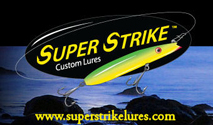

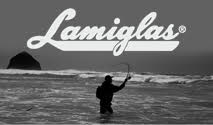
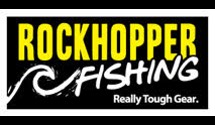
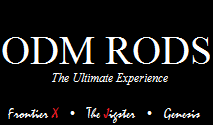
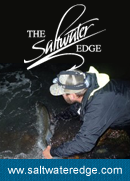
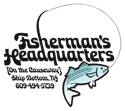

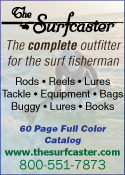
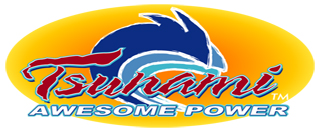

Thanks Z going to club meeting for GSBA will pass it around made 50 copys to hand out
↓Thanks Z, just mailed the letter today.
↓Sent out after last weeks meeting. Thanks for posting Surfcasters Journal
↓What is the mailing address?
↓Never mind, I’m a bit slow today. I see it on the letter.
↓Letter is in the mail. Thanks for doing the work for us. Much appreciated. The right words to the right guy.
↓R
In the second paragraph to Mr. Martens, you stated, “increase size limits”. I hope he understands what that means!
↓sent mine today
↓easy enough, just transferred the letter to Microsoft Works Word Processor and it’s in the mail…..nice job, guys
↓Mailed today
↓It is not a bad idea to print some copies for your friends and relatives to sign and send in.
All the work is done for you. All you have is the price of a stamp.
That is a small price to pay for something we can’t afford to lose.
↓In the mail
↓Probably doesn’t matter much because I doubt it will be read that closely, but I sent a heavily edited version to correct grammar and syntax. Happy to share. Thanks for posting!
↓Letter is on its way for a good cause.
↓Letter is on its way. Thanks for sharing!
↓Pingback: NYCRF letter to DEC …print, sign and mail…plus tautog news | East Coast Surfcasters